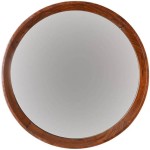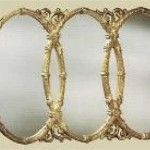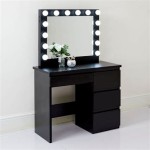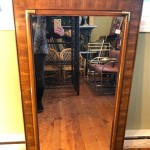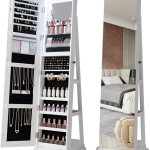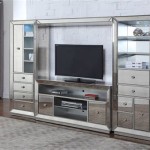Brushed vs. Mirror Stainless Steel: A Comprehensive Comparison
Stainless steel remains a popular choice for various applications, from kitchen appliances to architectural elements, due to its durability, corrosion resistance, and aesthetic appeal. Two common finishes, brushed and mirror, offer distinct visual characteristics and practical differences. Understanding these distinctions allows for informed decisions based on specific needs and preferences.
Appearance
The most immediate difference between brushed and mirror stainless steel lies in their appearance. Brushed stainless steel, also known as satin finish, features fine lines running in a single direction, creating a textured, matte appearance. This finish effectively masks fingerprints and minor scratches, offering a low-maintenance option. Conversely, mirror stainless steel, also called polished stainless steel, provides a highly reflective, glossy surface. Like a mirror, it reflects light and surrounding objects, creating a sleek and modern look. However, this high-shine finish readily reveals fingerprints, smudges, and imperfections.
Durability and Maintenance
While both finishes offer the inherent durability of stainless steel, brushed finishes exhibit greater resilience against daily wear and tear. The subtle texture helps to camouflage scratches and scuffs, maintaining a consistent appearance over time. Mirror finishes, while durable, are more prone to showing scratches and require more frequent cleaning to maintain their pristine appearance. Fingerprints and water spots are particularly noticeable on these polished surfaces.
Cost
Generally, brushed stainless steel appliances and fixtures are slightly less expensive than their mirror-polished counterparts. The simpler finishing process for brushed steel contributes to this cost difference. The intricate polishing required to achieve a mirror finish adds to the manufacturing cost, ultimately reflected in the retail price.
Manufacturing Process
Creating a brushed finish involves abrading the stainless steel with a series of fine grit belts or wheels. This process creates the characteristic unidirectional lines and matte texture. The grit size determines the final appearance, with finer grits resulting in a smoother, more subtle finish. Mirror finishes require a more complex polishing process. After initial grinding and sanding, the steel undergoes a series of progressively finer polishing steps, ultimately using very fine abrasives to achieve a highly reflective surface.
Applications
Both brushed and mirror stainless steel find application across a range of industries. Brushed finishes are commonly used in high-traffic areas and applications where practicality and low maintenance are prioritized, such as kitchen appliances, sinks, and door hardware. Mirror finishes are often favored for decorative purposes and in applications where a sleek, modern aesthetic is desired, such as decorative trim, backsplashes, and high-end appliances.
Cleanliness and Hygiene
While both finishes are inherently hygienic due to the non-porous nature of stainless steel, brushed finishes tend to show dirt and grime less readily. The texture helps to diffuse light and obscure imperfections. Mirror finishes, due to their reflective nature, highlight any dirt or smudges, requiring more frequent cleaning to maintain a sanitary appearance.
Resistance to Corrosion
Both brushed and mirror stainless steel possess excellent corrosion resistance, a key property of this material. The chromium content in stainless steel forms a passive chromium oxide layer on the surface, protecting it from rust and other forms of corrosion. The finish itself does not significantly impact the inherent corrosion resistance of the stainless steel.
Aesthetics and Design
The choice between brushed and mirror stainless steel often comes down to aesthetic preference and overall design goals. Brushed finishes offer a more understated, contemporary look, blending seamlessly with various design styles. Mirror finishes, with their high reflectivity and glamorous appearance, create a bold statement and are often used in modern and luxurious settings. Consider the existing décor and desired ambiance when selecting a finish.
Scratch Resistance
While both finishes can scratch, brushed stainless steel is inherently more resistant to showing scratches due to its textured surface. Minor scratches tend to blend in with the existing lines of the finish. Mirror finishes, however, readily display even minor scratches, which disrupt the smooth, reflective surface. This makes them less suitable for high-traffic areas or applications where they may be subject to frequent contact.

Polished Vs Satin Brushed Stainless Steel Components For Barades

Brushed Vs Satin Finish Stainless Steel The Difference Between Them Tbk Metal

Shower Door Finishes 101 Brushed Chrome Vs Polished Glasscrafters

How To Give Stainless Steel The Right Mirror Finish Thepipingmart Blog

3 Steps To Match A Stainless Steel Satin 4 Finish

What Is The Difference Between Brushed And Polished Stainless Steel Compare Similar Terms

Supply 201 304 Stainless Steel Sheet Architectural Finish Mirror No 8 And Brush 4 China Made In Com

Common Finishes Of Stainless Steel Structurals

Brushed Vs Satin Finish Stainless Steel The Difference Between Them Tbk Metal

Brushed Vs Satin Finish Stainless Steel S Arthur Harris

